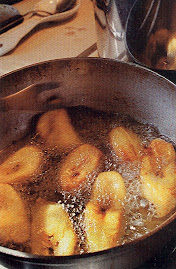

“Noche de Caldosa”
Cuba en Tucson
March 26, 2009
A few interesting facts:
“Caldosa” is a word derived from “caldo” (broth or soup). It is usually thicker than just broth, however. The best way to describe it in English is to call it a “stew.”
The caldosa is a more recent version of a very traditional Cuban dish known as “Ajiaco.”
In the year 1570, a version of Ajiaco was already popular in the island. It is believed that Ajiaco derived from a traditional Spanish stew known as “olla española” (Spanish pot) which consisted of a mix of meats and vegetables cooked slowly.
In 1856 the first published “Manual of Cuban Cuisine” included a recipe for Ajiaco –a country dish made with beef, pork, chicken and a wide variety of tropical root vegetables or tubers (“malanga” or Taro Root, potatoes, green plantains, sweet potatoes, yams, corn, and some recipes include chayote).
The word “ajiaco” has come to mean in Cuban vernacular any kind of cultural mix –especially when it refers to music and folkways of the Cuban people.
After the Revolution of 1959, the Ajiaco underwent a transformation –it became “Caldosa,” a public cooking event in which each neighbor brings whatever ingredients they have at hand. Some critics say this came about because of food scarcity; others believe that the change had more to do with the collective emphasis of socialism.
This opinion is supported by the fact that Noches de Caldosa are officially celebrated in each Cuban street and organized by the CDRs (Comite de Defensa de la Revolucion) –a political kind of “neighborhood watch” established in each street.
There is a famous Cuban “son” (traditional song) that honors the Caldosa. It is called “La Caldosa de Kike y Marina” in reference to an elderly couple from the province of Las Tunas. Legend has it that they “invented” the dish, but in fact the history of the Cuban Stew dates back centuries.



No comments:
Post a Comment